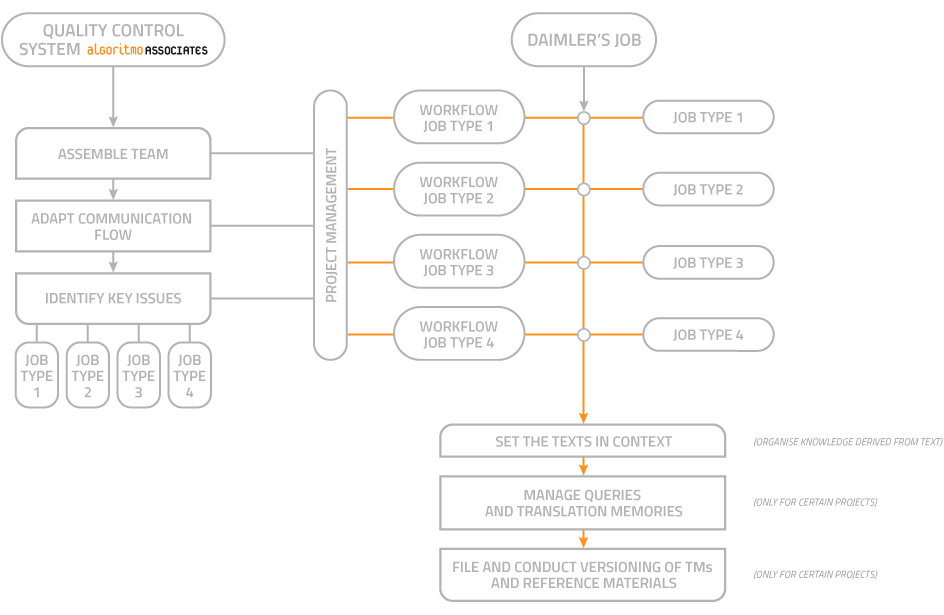-

Progetti
Daimler
 OVER 10 YEARS OF COLLABORATION
OVER 10 YEARS OF COLLABORATION
 ORE THAN 10,000 PROJECTS COMPLETED
ORE THAN 10,000 PROJECTS COMPLETED
The criterion for assigning the commodity code was adapted to the process of organising documents into content modules. Every job is therefore analysed upon receipt and classified on the basis of the subject matter.
Keeping the project team small, we identified the talents that have been expressly trained for this type of project, and assigned unique two-way roles so that every resource could be used both for revision and for translation.
In the preliminary stage the modules received are broken down into single files in order to prevent identical texts being translated differently. This made subsequent processes far more efficient.
A system of queries, thoroughly road-tested over years by this stage, teaches the team about any new technical terminology and allows the team to agree on the translation of new texts or important passages. The system of queries and instructions also relate to the formal aspects of the texts, punctuation, etc. The types of corrections made are then indicated in the queries form in order to alert other team members in case the same issues arise in other modules.
In some cases, translation memories are managed internally and are constantly updated to maximise terminological consistency and guarantee consistently high standards over time.

Once the complexity of the technical and commercial documentation has been ascertained, the text is always contextualised; in other words the context in which every text will be produced is identified. This is particularly important when translating web portals, which are highly complex, but which, nevertheless, require consistency in terminology, especially in the case of front-end texts to be read by the end-users.